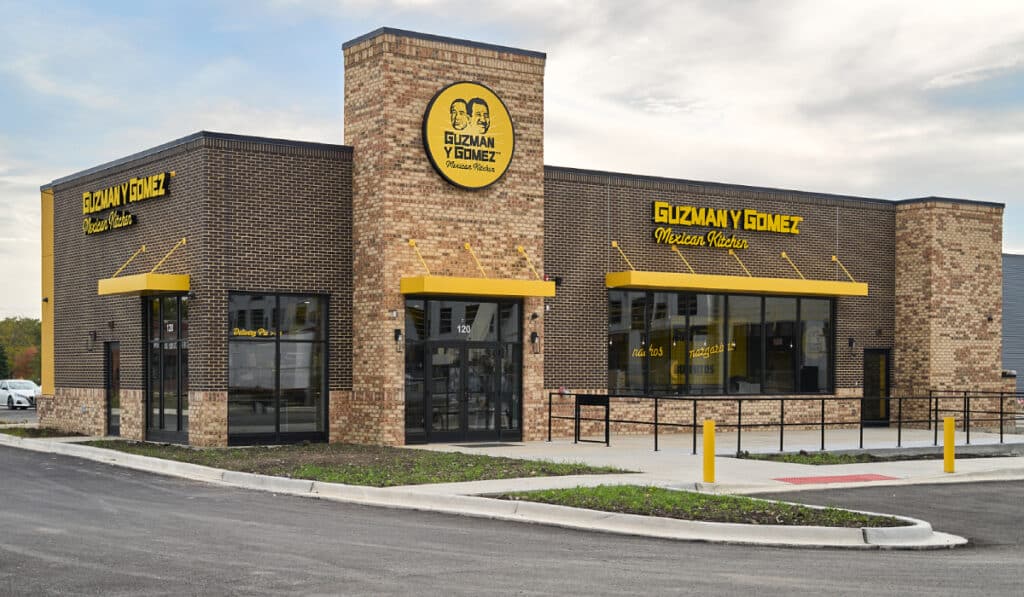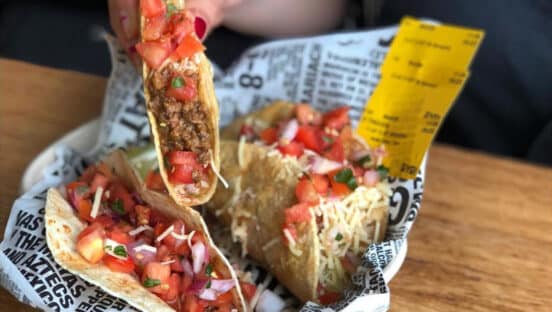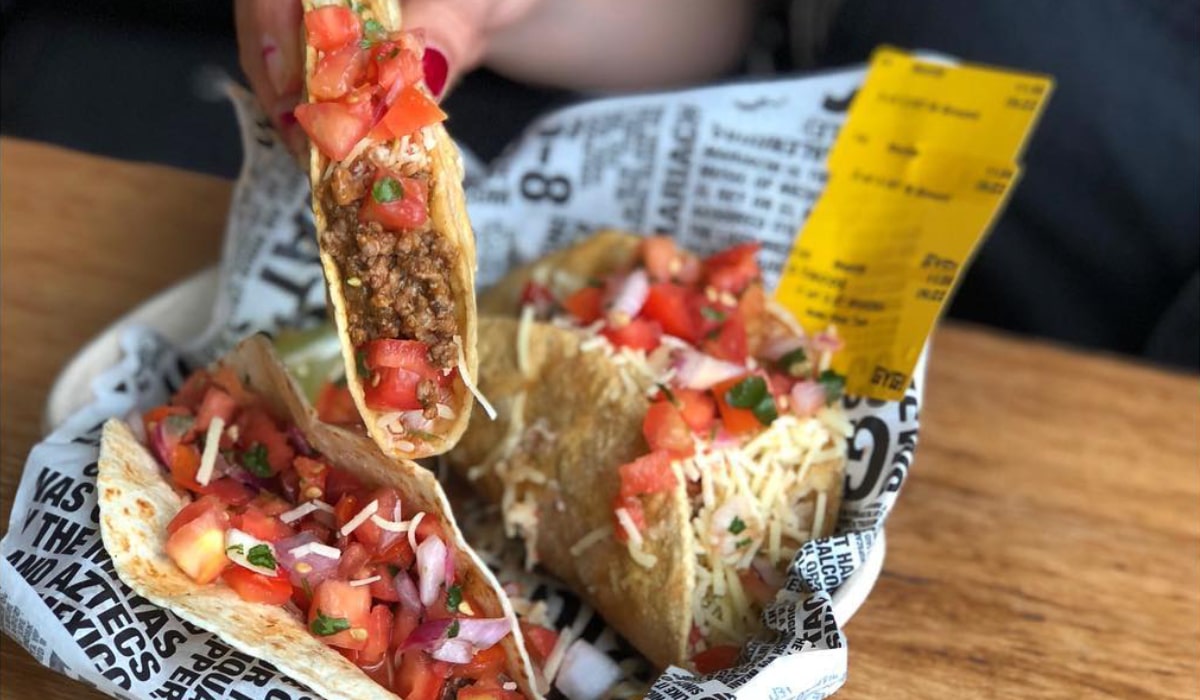Steven Marks is known to become obsessed with tasks.
After setting up a hedge fund in London, the former Wall Street executive moved to Australia about 20 years ago to fulfill his childhood dream of opening a waterfront hotel, inspired by photos of beaches he would see on his Australian co-workers’ desks. The quest was short-lived as Marks could never get zoning approved.
But when he arrived, the country struck a chord with another childhood memory. As a native New Yorker, he grew up playing soccer alongside several Hispanic friends, so he developed a love for Mexican cuisine. Marks couldn’t stand the fact that none of the Mexican restaurants in the country were up to his standard. He made sure to try all the places he could in Sydney—just to be sure. Marks remembers marching into his office, where there were only a couple of other people, and declaring that they must reintroduce Mexican food into the country.
So naturally, Marks brought in Mexican chefs, surrounded himself with the local Latino community in Australia, and opened Guzman y Gomez in 2006. The business was named after two of Marks’ childhood friends.
“And ever since then, it was really just doing trial, educating people—what black beans were and what a carnitas was and we had beautiful steaks and we made everything fresh,” Marks says. “But it took a long time for people to really understand what we were doing. … One thing for GYG, which raised the foundation, is we will never compromise on quality of our food or our people. And I think when you build a culture like that and especially when it’s tested early on is really what makes the brand so strong.”
After years of brand building, the fast casual now has nearly 200 restaurants in Australia, with a goal of reaching 1,000 units in the country. For perspective, there were 1,025 McDonald’s locations in the market as of September 30. Other notable big chains are Subway (about 1,200 units), Domino’s (about 760 units), KFC (about 750 units), and Hungry Jack’s/Burger King (about 450 units). Next year, GYG hopes to file an IPO to trade publicly in Australia.


The company went global in 2013 when it debuted in Singapore. Two years later, it planted a flag in Japan. Systemwide, the chain earned around $500 million in sales (converted from Australian dollars) during its fiscal 2023 calendar, up from roughly $380 million in the year-ago period.
All food at GYG is made from scratch, including burritos, tacos, nachos, quesadillas, enchiladas, and salads. In Australia specifically, Marks says the restaurant is the biggest buyer of free-range chicken outside of the supermarkets. The company manages to uphold these fresh standards in a drive-thru model where food is put into customers’ hands in about three to four minutes. That’s thanks to a bespoke sticker system and dual linear kitchen model in the back of house. The chain claims it can sell up to 450 burritos in one hour and up to 1,000 per hour on opening day when it sells the item for $5. One fan-favorite menu item is the Cali Burrito, which replaces rice with skin-on French fries.
The restaurant is known for a campaign where it describes itself as “the fast food your mom says yes to.”
In Australia, dine-in/takeout mixes 38 percent, followed by delivery partners (24 percent), drive-thru (22 percent), and digital channels (16 percent). The brand launched a new website and app in April 2022 to drive incremental revenue. From that time through June, the app was downloaded more than 1.5 million times.
“There’s not a lot of people that live [in Australia]. There’s a population of 25 million, so to make it in food, you have to be really good,” Marks says. “You have to have a brand that really resonates with people. And what we did was we gave basically the population an alternative to traditional fast food. Obviously we do burritos and Cali Burritos and enchilada burritos and tacos and quesadillas. And we do many size portions of everything and we have kids meals.”
Marks never took his eyes off the U.S. during GYG’s rise in Australia. In January 2020, the first domestic drive-thru restaurant opened in Naperville, Illinois, a suburb of Chicago. Three more Chicagoland spots have opened this year in Schaumburg (January), Crystal Lake (May), and Buffalo Grove (November). The goal is to reach 15-20 stores in the market. The next move would be to replicate Australia’s growth pattern and find viable college towns, like Madison, Wisconsin, and Ann Arbor, Michigan.
Unlike most of its Mexican fast casual peers, GYG is open for breakfast, lunch, and dinner.
“As we started opening up more and more drive-thrus, I realized there’s nothing like this in the U.S.,” Marks says. “I think early in the day, Chipotle did a great job with food integrity, but when you come to a GYG, in my opinion, our food quality is better. The menu is obviously bigger, but most importantly, so is the energy of our people.”
Around 30 GYG restaurants have opened worldwide in 2023. Each country in which the brand resides mandates different requirements, but what doesn’t change is the chain’s desire to seek the best real estate available.
Marks calls it “AAA” real estate. He believes the higher costs are worth the additional brand recognition.
“We have so much confidence in our food and our people to deliver revenue,” Marks says. “So I look at revenue is that you got your food. You got your people. So we just always make sure we have some of the best real estate people in the U.S. and in Australia that work for GYG. And then construction is different. In Chicago, because it’s cold, how do you build that to be different than you have to do for say in Charlotte? So we just make sure that we research very well and we know what’s happening on the construction side to make sure that we can deliver the GYG that has the personality that we want. It’s just being very knowledgeable about the different locations within America but within the world as well.”
GYG uses a mix of franchise and corporate restaurants in Australia. As of June 30, there were 171 locations in the country, split between 116 franchised outlets and 55 company-operated units. Seventy-six were drive-thru, 49 were part of a strip, and 46 were classified as an “other” category. Marks isn’t sure yet about adopting the same model in the U.S. If deals were to be struck, it would be with owner-operators who oversee one to two restaurants and are heavily involved in the day-to-day operations of the stores.
He puts his money where his mouth is; he appointed a co-CEO so he could spend more time in restaurants talking to employees and customers. According to the Sydney Morning Herald, long-time board member Hilton Brett handles finance, IT, HR, legal, real estate, and investor relations while Marks focuses on focus on food, marketing, operations, and U.S. expansion.
The obsession is exactly how a New Yorker finds success selling Mexican food in Australia.
“I think when you build a brand, you have to have a mission and ours is really to disrupt the biggest industry in the world that is fast food,” Marks says.








